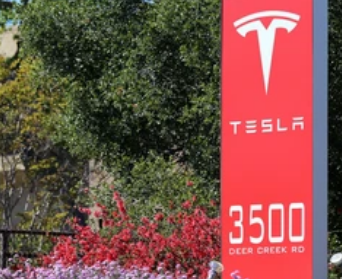
Haiden Holmes
Apr 18, 2022 09:58

Their attraction has been especially strong in recent months, as investors fear the Federal Reserve may suffocate the US economy as it aggressively tightens policy to counteract rising consumer prices. While growth is robust at the moment, some major Wall Street firms have expressed fear that the Fed's aggressive policies may trigger a recession as they work their way through the economy.
Last month, the US Treasury market delivered a worrisome warning when short-term rates on various government bond maturities increased beyond longer-term levels. This pattern, dubbed an inverted yield curve, has historically foreshadowed recessions. Meanwhile, investors continue to be concerned about the consequences from Ukraine's conflict.
"The reason (conservative stocks) are succeeding is that investors are recognizing all of these obstacles to growth," Walter Todd, chief investment officer at Greenwood Capital, said.
While the S&P 500 lost over 8% in 2022, utilities gained over 6%, staples gained 2.5 percent, healthcare lost 1.7 percent, and real estate lost 6%.
With earnings season taking off next week, defensive sector businesses reporting include healthcare behemoth Johnson & Johnson (NYSE:JNJ) and staples behemoth Procter & Gamble (NYSE:PG) (NYSE:PG). Investors will also be watching Netflix's (NASDAQ:NFLX) and Tesla's (NASDAQ:TSLA) reports (NASDAQ:TSLA).
Signs that US corporate earnings will be stronger than expected this year could bolster the case for other market sectors, such as banks, travel companies, and other businesses that benefit from a growing economy, as well as high-growth and technology names that have fueled stock market gains for the better part of the last decade.
Historically, defensive stocks have demonstrated their worth. Over the last two decades, DataTrek Research discovered that the healthcare, utilities, and consumer staples sectors outperformed the S&P 500 by as much as 15 to 20 percentage points during times of economic instability.
Lauren Goodwin, economist and portfolio strategist at New York Life Investments, said the firm's multi-asset team has recently changed its portfolios away from financials and industrials and into staples, healthcare, and utilities stocks.
Expectations of a more hawkish Federal Reserve have "raised the likelihood that this economic cycle may be shorter and hastened our allocation move toward these defensive equities sectors," Goodwin said.
The Federal Reserve – which hiked rates by 25 basis points last month – has suggested that it is prepared to use more aggressive rate rises and accelerate the unwinding of its nearly $9 trillion balance sheet in order to drive inflation down. Investors have also been uneasy due to geopolitical uncertainty caused by the Ukraine conflict, which has pushed commodity prices higher and contributed to inflation.
With prices soaring, defensive stocks may also function as "inflationary hedges to a degree," according to Mona Mahajan, senior financial strategist at Edward Jones.
"When you consider where customers have a little more pricing power, they will still have to buy essentials, healthcare, and most likely pay their electricity bills regardless of price rises," Mahajan said.
Not all investors are negative about the economic outlook, and many feel that momentum might swiftly move to other sectors of the market if the economy continues to perform well.
According to Art Hogan, chief market strategist at National Securities, the probability of a recession this year is 35%, "but that is not our baseline."
"As fears of an oncoming recession diminish, I believe that sponsorship of the defensives will diminish as well," Hogan said.
The growth in defensive stocks has resulted in an increase in their values. According to Refinitiv Datastream, the utilities sector is trading at 21.9 times future earnings forecasts, the highest level on record and much higher than the sector's five-year average price-to-earnings ratio of 18.3 times. The staples sector is now trading at a premium of around 11% to its five-year average forward P/E, while healthcare is trading at a premium of 5%.
"It would not surprise me in the least if this trade saw some mean reversion for a period of time," Todd added. "However, as long as these worries about growth linger, those places may continue to outperform."


Apr 19, 2022 09:53